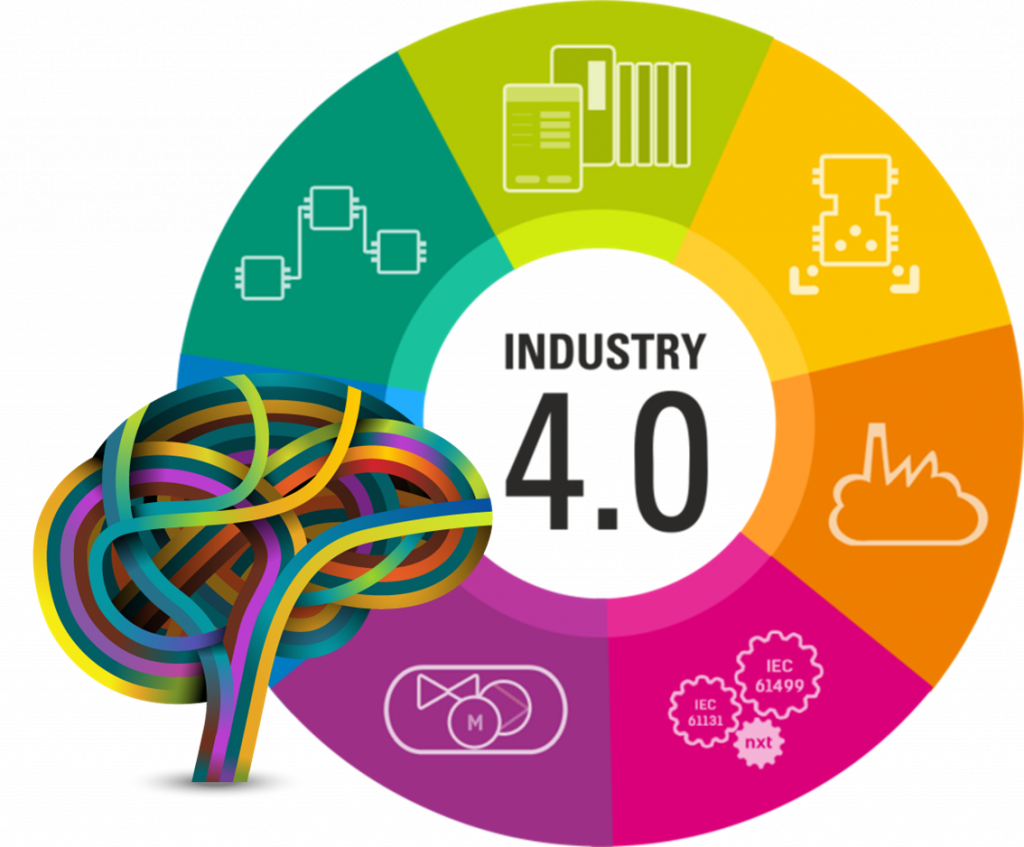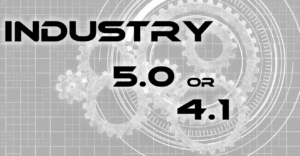Industry 4.0 is the popular name given to the fourth industrial revolution ushered in by the digital age. Analysts from the Boston Consulting Group (BCG) explain the first three revolutions were driven by steam, electricity, and automation. They write, “Industrial production was transformed by steam power in the nineteenth century, electricity in the early twentieth century, and automation in the 1970s.”[1] The fourth revolution is being driven by data. The BCG analysts explain, “Today, another workforce transformation is on the horizon as manufacturing experiences a fourth wave of technological advancement: the rise of new digital industrial technologies that are collectively known as Industry 4.0.” Some pundits believe Industry 4.0 is more evolutionary than revolutionary since computers were the foundation of the last revolution and remain the foundation of Industry 4.0. Stepping stones between the two revolutions include the generation of big data, advanced computing, and the rise of digital manufacturing.
Big data is the lifeblood of the digital age. Data is generated from ubiquitous sensors, the Internet, and mobile technologies. Digital manufacturing was a direct result of increased computing power and the development of computer aided design (CAD). According to the folks at Sculpteo, “Digital manufacturing can be defined as an integrated approach to manufacturing that is centered around a computer system. A machine is able to read a CAD file in order to deliver it in a few hours. Within the same process, it is possible to prototype, produce and fabricate molds to aid production. When consumers’ habits and expectations are evolving, it is necessary that we find a new production mode. Within the Factory of the Future, digital manufacturing appears as an answer to this evolution.”[2] Computers and digital manufacturing ushered in other Industry 4.0 technologies like additive manufacturing (aka 3D printing) and the Internet of Things (IoT). What really makes Industry 4.0 revolutionary, however, is the emergence of cognitive technologies (i.e., types of artificial intelligence). These technologies combine to create the possibility of cognitive manufacturing.
Cognitive technologies and Industry 4.0
According to Keith Mills, “Cognitive manufacturing uses cognitive computing, the Industrial IoT, and advanced analytics to optimize manufacturing processes in ways that were not previously possible. It helps organizations improve fundamental business metrics such as productivity, product reliability, quality, safety and yield, while reducing downtime and lowering costs.”[3] Manufacturers continuously seek ways to achieve those results. What’s new is that cognitive technologies can improve processes across the organization in ways never before possible. “As factories and equipment get smarter and armed with new technologies, like IoT, AI, and Cognitive Automation,” writes Kanti S, “Industry 4.0 has finally arrived.”[4]
Cognitive technologies were not possible before the age of big data. Cognitive systems need data to analyze — lots and lots of data. For most manufacturers, having enough data is no longer a problem. In fact, most manufacturers have access to more data than they can analyze using older methods and probably more data than they actually need. The advent of the IoT has exasperated manufacturers’ data challenge. Kanti S observes, “Conventional computing will make way for new technologies to handle the large influx of data and the complexity of the analytics to pave way for cognitive manufacturing.” He continues, “Cognitive manufacturing fully utilizes the data residing across equipment, systems and processes to derive actionable insight across the entire value chain through different processes from design through manufacture to support activities. Built on the foundations of IoT and employing analytics combined with cognitive technology, Industry 4.0 or cognitive manufacturing drives its key productivity improvements in reliability, quality and efficiency of the manufacturing environment.”
Although most people have a basic understanding of what cognitive technologies can do, there is no definitive definition for the term. At Enterra Solutions® we define it as the combination of semantic intelligence (i.e., machine learning, natural language processing, and ontologies) and computational intelligence (i.e., advanced mathematical techniques). Cognitve systems, like the Enterra Enterprise Cognitive System™ (AILA®) — a system that can Sense, Think, Act, and Learn® — are designed as platforms that can augment decision makers in the Industry 4.0 era. Cognitive systems are capable of automating routine decisions (an industrial age capability), and they bolster Industry 4.0 by generating actionable insights that help human decision makers deal with anomalies or other high-level, complex business decisions. Unburdened of the limitations found in previous analytic systems, cognitive systems can make sense of large numbers of variables that expose root causes of problems or point to more effective courses of action.
“Cognitive manufacturing is powerful,” Mills writes, “because it combines sensor-based information with machine learning and other artificial intelligence capabilities to find patterns in structured and unstructured data from plant, enterprise and industry systems. It pulls relevant information together in real time and applies analytics to yield unprecedented levels of understanding and insights about the manufacturing process. It automates responses based on its findings and delivers actionable information as well as continuously updated knowledge to decision makers in the manufacturing setting.” He goes on to provide four compelling applications for cognitive manufacturing. They are:
- Asset Performance Management — Improving reliability and performance of equipment and assets through better visibility, predictability and operations.
- Process and Quality Improvement — Optimizing yield and productivity of manufacturing operations, from design through warranty support.
- Resource Optimization — Improving safety of workers and optimizing energy efficiency and facility productivity while reducing costs.
- Supply Chain Optimization — Improving visibility and insights to build a dynamic supply chain that accelerates innovation.
Cognitive technologies have enterprise-wide application. Mills explains, “Cognitive manufacturing is all about exploiting data from diverse sources — not only equipment sensors, but also logs, manuals, employee biometric monitors or the environment. The approach incorporates these types of sources and data into the analytical process to create a knowledgeable system that is continuously learning. It is able to make insightful operational recommendations based on a comprehensive understanding of manufacturing conditions. … Cognitive manufacturing enables companies to put a laser-like focus on quality throughout the life cycle of a product’s development — from design through production and warranty support.”
Concluding thoughts
Although discussions of artificial intelligence often sound like science fiction, manufacturers are already benefiting from AI solutions. Kanti S notes, “Industries across the globe are slowly waking up to this trend and embracing Cognitive Manufacturing to leverage the maximum insights from their data, in a bid to increase revenues and drive the maximum customer/client satisfaction.” According Nicole Hardin (@nichardin), Director of Product Management at Sage Software, manufacturers can’t afford to “slowly wake up” to the benefits of in investing in cognitive technologies. “In order to stay competitive in today’s manufacturing industry,” she writes, “companies will need to take the plunge and invest in AI technologies sooner rather than later (read: now). The benefits of AI will only continue to grow from here, and will continue to transform every aspect of manufacturing — from design and production, to supply chain management and administration. The adoption and implementation of AI-driven systems will transform manufacturing into an industry built on data-driven strategies and proactive decisions, improving the way manufacturers operate, boost productivity, keep costs reasonable and ultimately, produce goods that improve customers’ lives.”[5]
Footnotes
[1] Markus Lorenz, Michael Rüßmann, Rainer Strack, Knud Lasse Lueth, and Moritz Bolle, “Man and Machine in Industry 4.0,” bcg.perspectives, 28 September 2015.
[2] Sculpteo, “Digital Manufacturing — The Factory of the Future is Here Today,” IndustryWeek, 10 January 2017.
[3] Keith Mills, “What Is Cognitive Manufacturing?” Metrology.news, 16 January 2019.
[4] Kanti S, “How Cognitive Technologies are Redefining the Future of Manufacturing,” Analytics Insight, 21 January 2019.
[5] Nicole Hardin, “The Latest Industrial Revolution Will Be Powered by AI – the Time to Invest Is Now,” Manufacturing.net, 14 January 2019.





